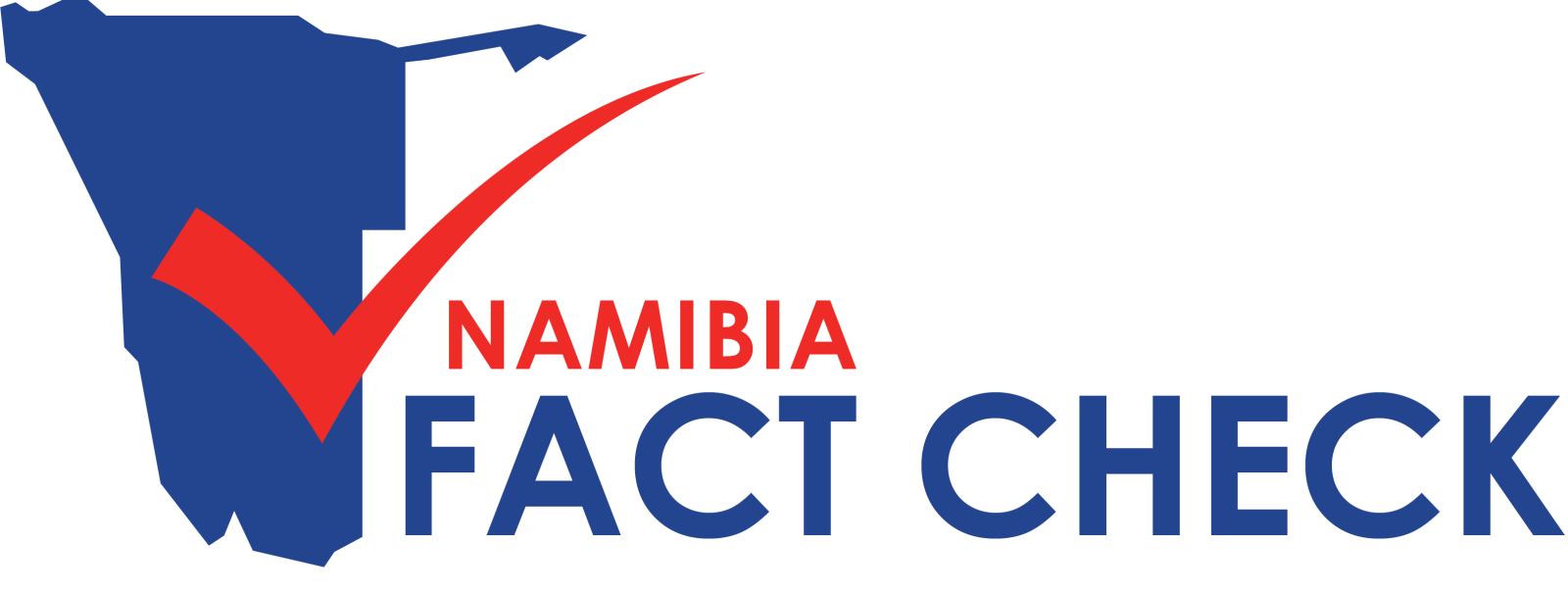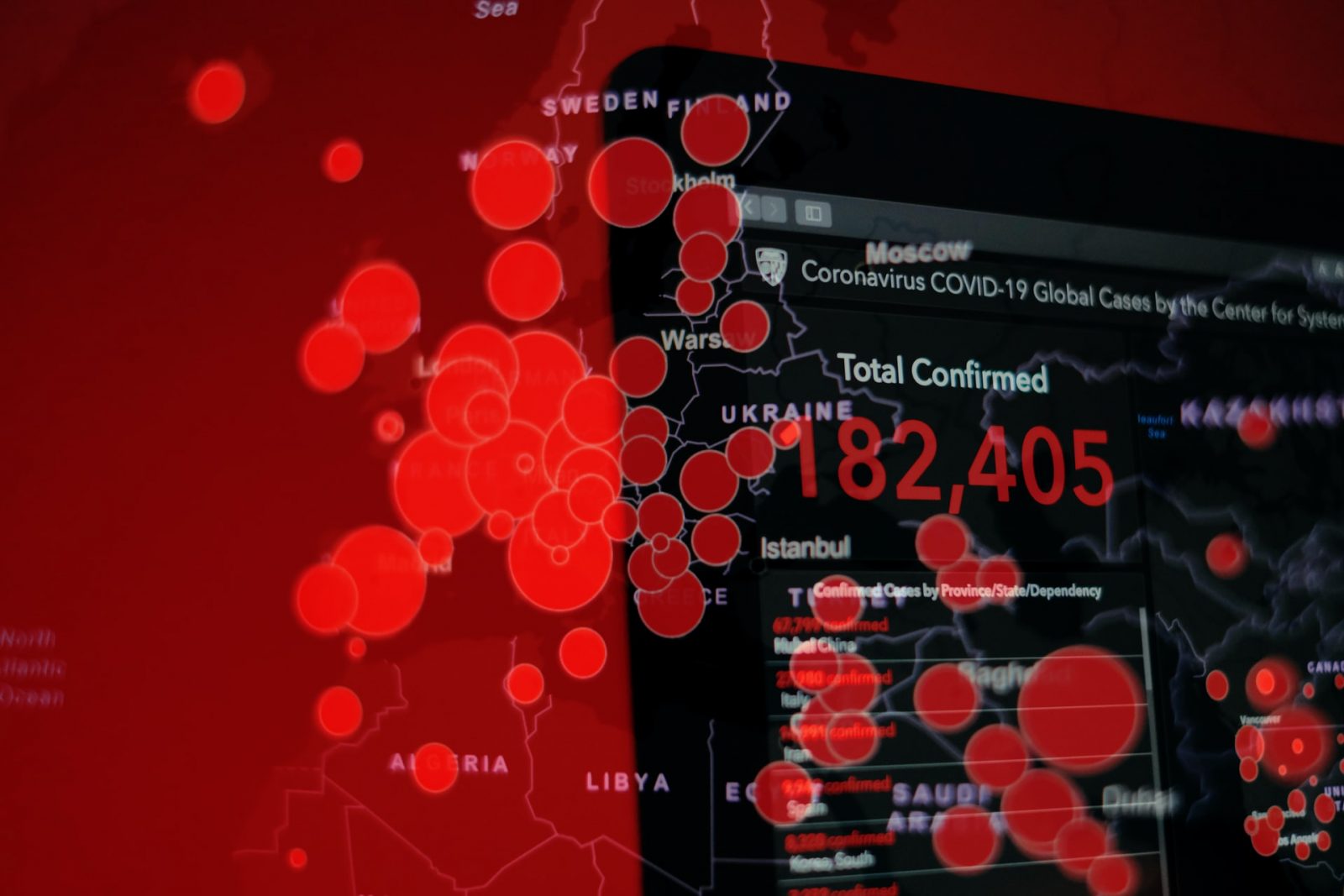Photo by Brian McGowan on Unsplash
So poisoned and polluted has the COVID-19 health information landscape become that the new term was coined in the midst of it all.
As of 24 April 2020 the UN Education, Scientific and Cultural Organisation (UNESCO) has labelled the tide of disinformation, that has flooded the online information landscape and tainted perceptions and responses to the COVID-19 pandemic, a ‘disinfodemic’.
This is it off the bat:
“COVID-19 has led to a parallel pandemic of disinformation that directly impacts lives and livelihoods around the world. Falsehoods and misinformation have proven deadly and sowed confusion about life-saving personal and policy choices.”
– UNESCO
As the UNESCO statement illustrates, by now it should be abundantly apparent to almost everyone that disinformation is a major problem and massive challenge accompanying the COVID-19 pandemic. And it doesn’t seem to be abating, but rather escalating and amplifying.
The new UNESCO term comes on the heels of the World Health Organisation (WHO) having labeled the same tide a “massive infodemic” in early February 2020, just as the world was really awakening to the COVID-19 outbreak.
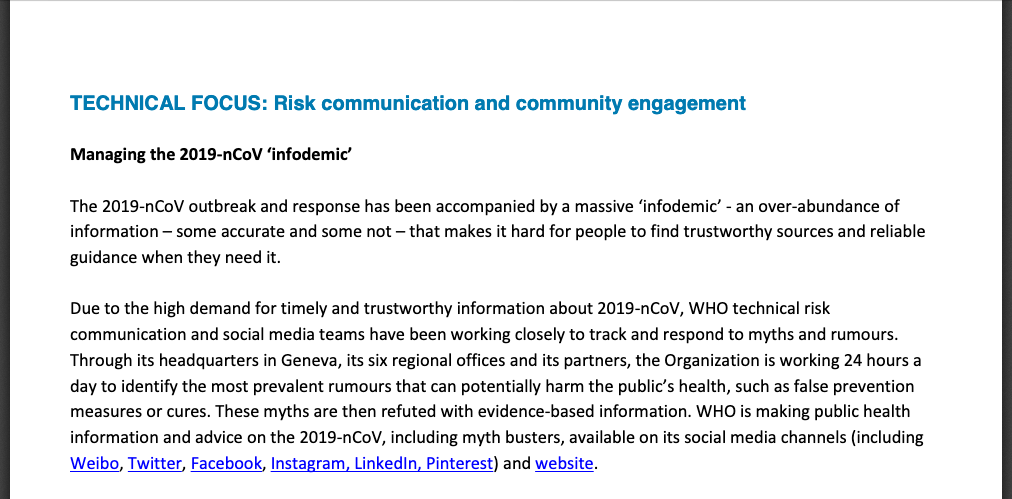
To cut to the chase, this is what you need to know and be aware of about the disinfodemic:
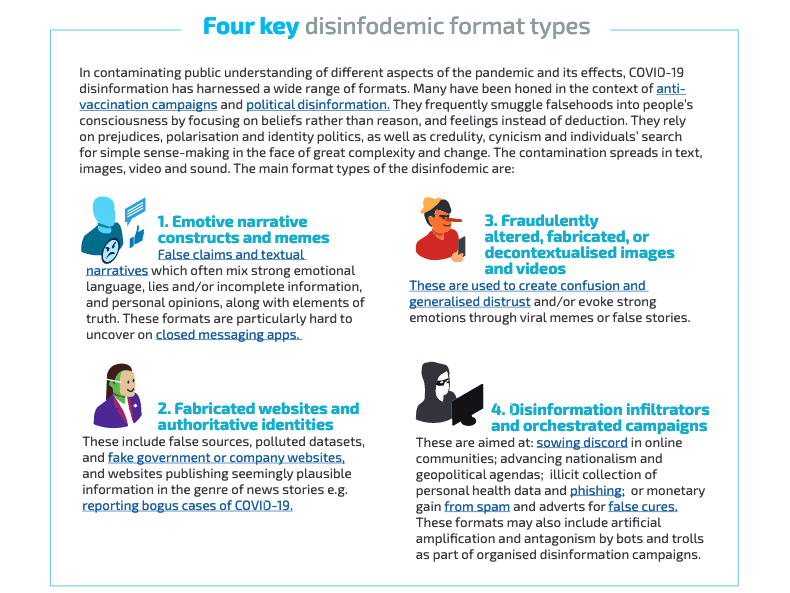
UNESCO has also identified “nine key themes of the disinfodemic”:
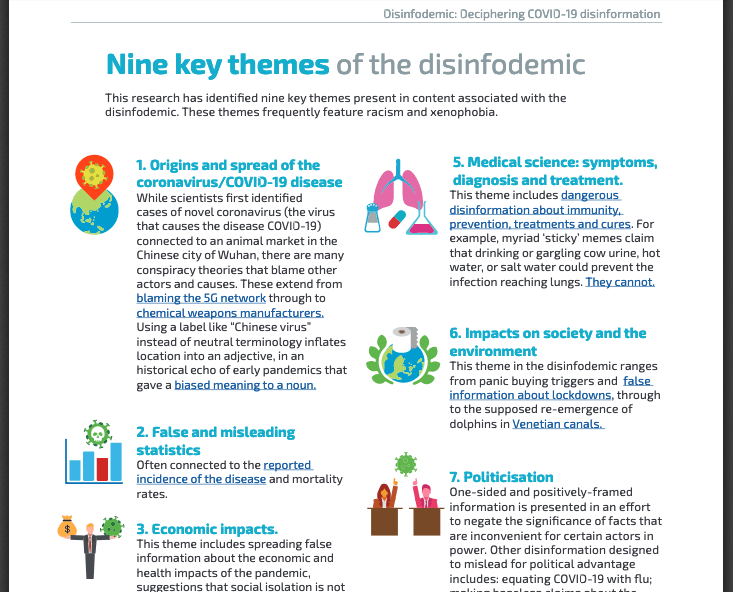
To be clear, these are the “nine key themes”:
- Origins and spread of the coronavirus/COVID-19 disease
- False and misleading statistics
- Economic impacts
- Discrediting of journalists and credible news outlets.
- Medical science: symptoms, diagnosis and treatment
- Impacts on society and the environment
- Politicisation
- Content driven by fraudulent financial gain
- Celebrity-focused disinformation
The theme that is especially concerning, is number four, “Discrediting of journalists and credible news outlets”, for the aim and effect is to undermine media’s contribution to disseminating verified, fact-based information in a time of crisis, thereby causing and fueling distrust and confusion.
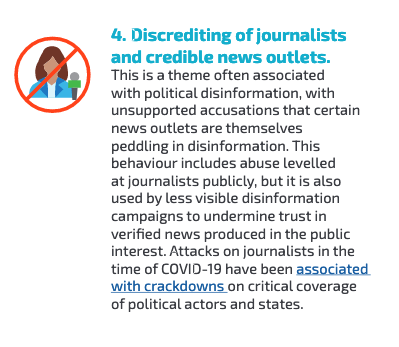
To read more about the four key format types and nine key themes of the disinfodemic, go here.
And visit UNESCO’s webpage, Combating the disinfodemic: Working for truth in the time of COVID-19 for a lot more information on this topic.
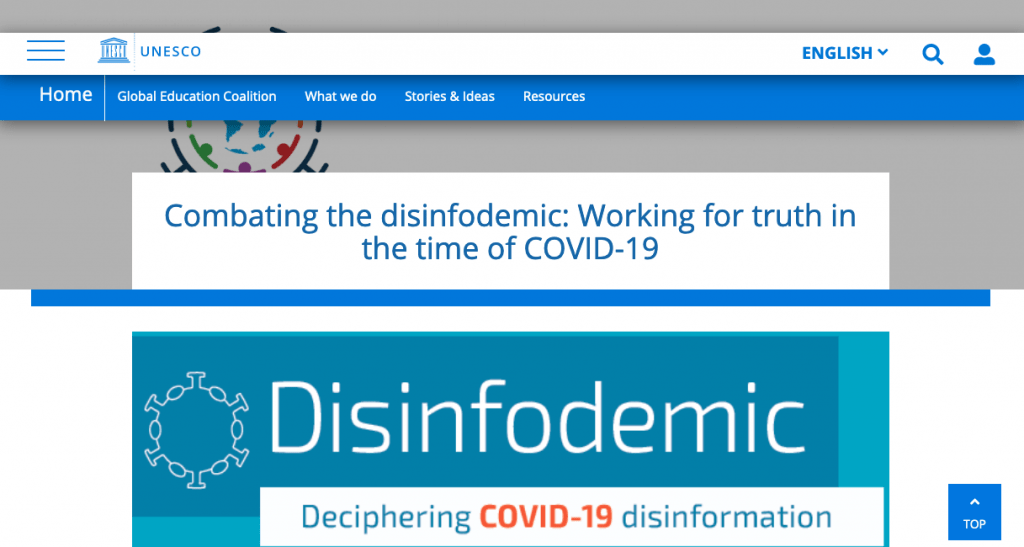
For an interesting explanation of what and who is driving all the disinformation around COVID-19, see this really informative BBC article and video.
